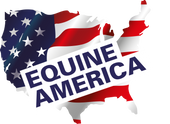Feeding the Young and Growing Horse

Each life stage has different nutritional requirements and the young, growing horse is no exception. Making sure you get the diet right in these early years is vital, as an unbalanced diet in the early years can impact on their health, long term soundness and athletic performance in the future.
A newborn foal will obtain all its nutrition from the mare’s milk, but as they grow, the stomach and digestive tract will develop and mature to allow the horse to eat solids including fibre. Weaning in the horse usually takes place around 6 months old, once they have transitioned from milk to a forage-based diet. In the early days you might see foals mimicking the mare eating hay or grass, but this will not be meeting their nutritional requirements, it will be contributing to the development and maturation of their gut – including the establishment of a healthy micobiota – the beneficial microbes which colonize the gut, and play key roles in fibre digestion, vitamin synthesis and the immune system.
The most rapid phase of growth of the foal is in utero during late gestation during the last trimester. Therefore, careful attention should be paid to the mare’s diet during pregnancy and lactation (more on this another time!).
Newborn foals will weigh approximately 10% of adult weight at birth and be approximately 45% of adult bodyweight by 6 months, all fed on milk. As a yearling they will be approximately 65% of adult body weight and by 2 years old reach approximately 90% of body weight. After this the growth rate will slow down, but final mature adult bodyweight may not be achieved until 5 years of age.
During this rapid growth phase, it is important to meet both energy and protein requirements, as well as other key nutrients such as vitamins and minerals, to ensure optimal growth and development. Requirements for additional or supplemental feeds, including minerals and vitamins will vary depending upon the nutrient levels and quantity of the grass and forage, so we would recommend speaking to your own nutritionist with knowledge of your area to achieve best results.

A balanced diet is critical in the growing horse, but the key nutrients to ensure healthy musculoskeletal development are:
- Energy – getting the balance is important, too little and growth will be slowed, too much can also result in developmental abnormalities, so avoid over-topped youngsters!.
- Protein – an essential part of the diet, required to make most tissues and enzymes in the horse. Amino acids are the building blocks of protein. Essential amino acids, are those that must be fed in the diet and cannot be synthesised by the horse. There are approximately 10 essential amino acids in the growing horse, and lysine is the first limiting amino acid in growing horses, meaning it is the first to affect development if adequate levels are not provided in the diet.
- Calcium and Phosphorus – are key for musculoskeletal development. Calcium accounts for nearly 35% of equine bone, as well as playing key roles in muscle and nerve function. Phosphorus accounts for around 15% of bone, and also plays key roles in energy and fat metabolism. Calcium:phosphorus ratio ideally needs to be between 1.5:1 to 3:1 in an equine diet, as too much phosphorus can lead to impaired calcium absorption.
- Copper, Zinc and Manganese- are key trace minerals that play vital roles in bone growth and development.
Mineral and other nutrient imbalances in growing youngstock are a risk factor for developmental skeletal abnormalities, although genetics and environmental factors also play a role. Getting the nutrition right at this life stage will ensure they receive optimum levels of key nutrients for skeletal development and growth and can impact on their future.
For further advice please contact our technical team via the Office info@equine-america.co.uk

